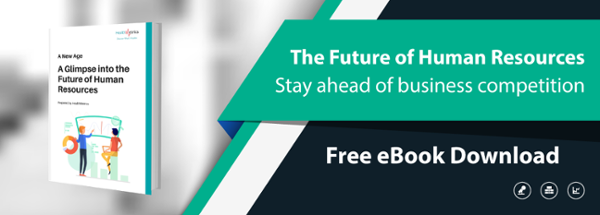Employee Benefits Communication is one of the driving factors of talent movement in an organisation. An Employee Benefits Communication Plan should complement rather than compete with all other corporate communications. Learn how you can create a better Employee Benefits Communication strategy.
Is an Employee Benefits Communication Plan Important?
ADP, a leading provider of human resource management services, conducted a survey that showed 80% of human resource decision makers deem it as necessary for employees to understand their benefits entitlement fully. Unfortunately only about 60% of employees in companies today have full comprehension of their benefits program.

Benefits communication is one of the driving factors of talent movement in an organisation. However, research shows that 66% of mid-sized organisations and 36% of large companies do not allocate an employee communication budget for their respective benefits plan.
Without proper communication of the employees’ benefits, employees may not know or understand how companies take care of them and instead feel that they do not have adequate benefits.
So where do we start in developing an effective benefits communication plan?
1. Strategic Timing for Maximum Engagement
Before any other planning is done, the timing of announcements and activities have to be strategically planned for maximum reach and impact.

Planning events during high absenteeism days such as Mondays or Fridays is not the wisest idea. Scheduling a health and wellness program during your company’s annual potluck dinner sounds even worse. It is crucial that your benefit programs do not clash with other conflicting corporate activities.
So how do you tally your benefits plan with company events? An annual communications calendar would be of great help in enabling your HR team to strategically time announcements & employee engagement events.
Appropriate scheduling notifications of benefits-related events is inevitably more effective than inundating your employees with unplanned company communications.
2. Benefits Meeting
During employee onboarding, the Benefits Plan Administrator should always ensure that new employees are crystal clear with regards to their benefits & benefits-related programs organised by the company. Consider allowing new hires to have meetings with Benefits Plan Facilitators for any clarifications before choosing the perks they desire to experience. Essentially, any HR that is involved in the management of employee benefits can take up this role if your company does not have a Benefits Plan Administrator or Facilitator.

For existing employees, on-site benefits meetings are useful in clearing away any questions on utilising benefits that are offered to them. This is a helpful and efficient method for answering any specific inquiries about participating in the company’s benefits program, especially those about claims procedures. While conducting open enrollment, Benefits Plan Facilitators could give talks to enlighten employees on new program updates and motivate them to partake in these perks.
3. Multichannel Communication

With emails, mobile apps, instant messaging, and text messaging becoming more popular as a means of communication, companies should take these methods of communication as an opportunity to broadcast reminders and new benefits to your employees more effectively.
Reaching out via digital means is one of the most convenient ways to disseminate information to the workforce as publicising the information is more efficient & less of a hassle.
To reinforce the communication of perks sponsored by your company, printables such as one-sided leaflets or detailed brochures can increase the effectiveness of your campaign. If your workforce consists of interracial employees, consider printing your brochures in languages used most comfortably by the community.
4. Company Portal for 24/7 Access to Benefits Information
ADP research shows that approximately 7 out of 10 mid-sized organisations and 9 out of 10 large organisations owns a web-based portal to provide employees with their benefit details. We can deduce that the majority of both mid-sized and large organisations deem it essential to allow employees to access benefits material at any time of the day.

To ensure your benefits portal is a secure platform, design the company website with a secure sign-in process. This will provide a sense of security to your employees with their health data and other personal information being securely encrypted.
While you build your benefits communication portal, here are a few suggestions to encourage engagement on your page:
- Include valuable and relevant information about perks and wellness
- Add employees’ wellness goals besides their health details
- Design a simple system that allows portal access from desktops and mobile devices
- Ensure detailed benefits documents could be downloaded on demand
- Availability of access to help (email, phone or live chat)
- Sync company intranet to benefits portal for added convenience
- Have content that can be translated easily
- Attach a glossary of benefits terminology
5. Social Communication
It is undeniable that social networking can communicate your company benefits in a friendlier manner as employees find this a more approachable option as opposed to communicating directly with the HR department.

Every company is encouraged to have a social platform where information can be shared, and bonding of a community can occur. The simplest way to maximise content sharing with unlimited storage space is to make use of popular social media platforms such as Twitter and Facebook.
Assign a marketing member and a benefits facilitator to collaborate in creating content that encourages the participation in the benefit programs offered to the employees. Content such as financial responsibility tips, wellness recommendations, success stories of employees achieving their wellness goals and updates to benefits could effectively create a sense of belonging & boost employee engagement.
For example, you can encourage your employees to share their fitness progress and reward them when certain wellness goals are achieved. Accountability amongst the employees to meet their respective wellness goals can result from a well-planned digital social engagement strategy.
6. Total Compensation Statement
A great way to further communicate the value of your benefits program is by issuing Total Compensation Statements to employees. A Total Compensation Statement is a document that outlines the employee’s salary, perks, and other benefits over a period of time, typically annually.

In Malaysia, employers would typically provide an EA form (Borang EA) to employees for income tax declaration purposes which would have a simplified breakdown of the total compensation to the employee. However, employers can take it a notch further by providing a Compensation Statement with more information and in a more layman manner as a more effective benefits communicative strategy. This would help employees understand the benefits they have enjoyed, boost the employer’s efforts and create a positive image for the company.
HR Benefits Management solutions such as HealthMetrics automatically generates reports/statements on benefits entitlement, utilisation & balances which you can provide to your employees.
Communicate the values you provide
A benefits communication plan should complement rather than compete with all other corporate communications. Tally your benefits program with all other departmental activities and announcement timing for better participation by employees.
The quality and consistency of the communication are the driving factors of a positive outcome of this strategy. Therefore, thoughtful visuals and communication tone are both essential in ensuring that employees are able to relate well to the company’s efforts. Don’t be afraid to be creative in communicating the value of your programs to the workforce, so that they can enjoy the benefits and better appreciate the company’s efforts.




0 Comments